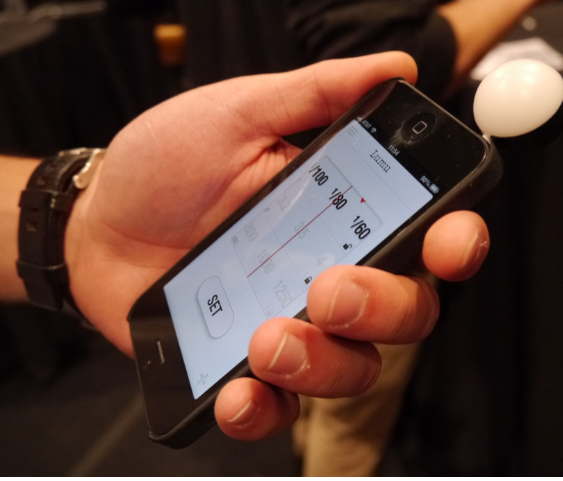Photographers are truly artists in their own right, taking images of objects, people and places in creative ways. As technological advances are constantly being introduced to help us in nearly every aspect of our daily lives, those controlling the camera are now able to replace outdated light meters with their digital, much more innovative, younger sibling.
Coined Lumu, this digital light meter can easily be inserted into an iPhone’s (News - Alert) headphone jack in order to assist photographers in more efficiently selecting the way in which to take a photo, from wherever they may be at that specific time. Sold for a mere $99, the product integrates key capabilities for creative picture takers, such as ISO, aperture and shutter speed parameters that can be set according to each individual’s needs, a recent article revealed.
“It’s the world’s smartest light meter,” Co-Founder Benjamin Polovic commented. “The existing light meters are large, bulky and very expensive. With Lumu, the main processing is done on the iPhone, so we use the iPhone’s power. It also doesn’t use any batteries; it’s powered from the iPhone.”

Image via Tech Crunch
To get the offering up and running, a user must simply decide which settings he or she wants to leverage and how they should be adjusted in order to capture the perfect image. In the not so distant future, the company hopes to also unveil a Bluetooth counterpart to this solution that will allow settings to be adjusted wirelessly.
Polovic added, “You take your iPhone or your iPod and plug it in and it’s going to recognize it, and it sets all of the parameters for your unique environment. So you put in your ISO that you use in your film or your digital camera, the aperture you want to use and then it calculates the time.”
If you decide to go ahead and purchase Lumu, some other functions that will be available at the touch of a button are an auto mode and a filter-style function that teaches the masses how to add in special effects after the photo has been snapped.
Cameras these days have as many or more buttons than every piece of clothing I own – combined. Anything that makes taking pictures and making memories simpler and more enjoyable has long been wished for by businesses in the photography and insurance industries. They are joined, of course, by photographers themselves. In fact, just within the last 20 years alone, digital photography has grown by leaps and bounds.
Now, “digital images can be displayed, printed, stored, and edited with photo editing software such as Photoshop or other high-end professional software. They then can be transmitted and archived using digital and computer techniques, without elaborate and messy chemical processing. The best thing about digital photography is that you can see the photos instantly and they look much better than the old Polaroid instant cameras that you had to use the expensive film for,” a separate report highlighted.
Most of us couldn’t even picture (pun intended) our lives without using digital photography. As this technology continues to grow, the quality of the photos we take will only get better, and it is unlikely that this industry will slow down anytime soon.
Edited by Blaise McNamee
